Table of Contents
恋词复习
- idle adj.空闲的;懒散的
- clause n.从句,分句;条款,款项;
- enforce vt. 实施,执行;强迫,强制
- reinforce vt. 加固;强化,增强;增援;
- spite n.恶意;怨恨
- resent v.对..表示愤恨
- propaganda n.宣传;鼓吹
- propagate v.传播;繁殖
无穷级数-幂级数
幂级数的收敛半径、收敛区间及收敛域

阿贝尔定理

定理
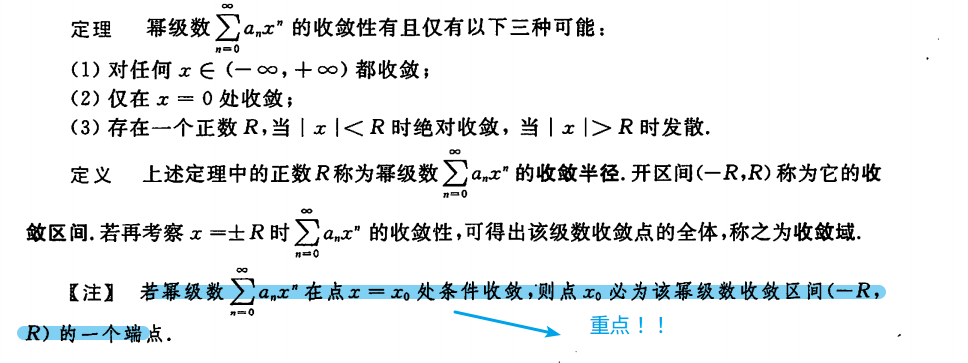

幂级数的性质
有理运算的性质
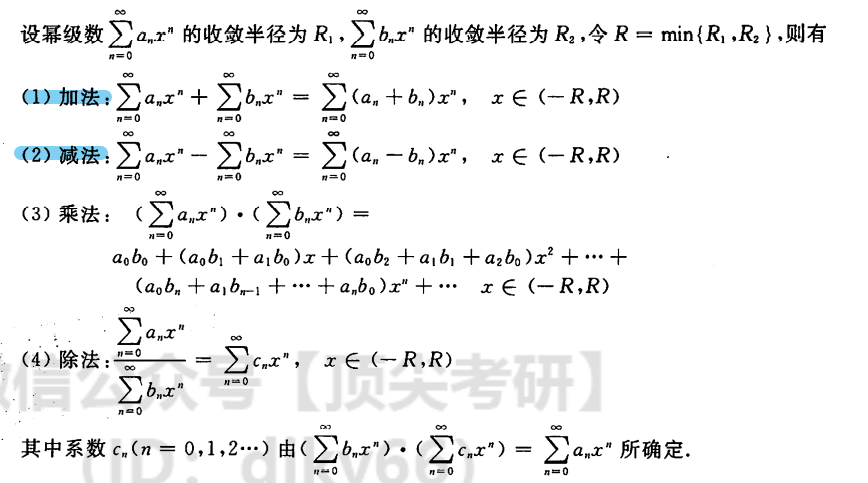
分析性质
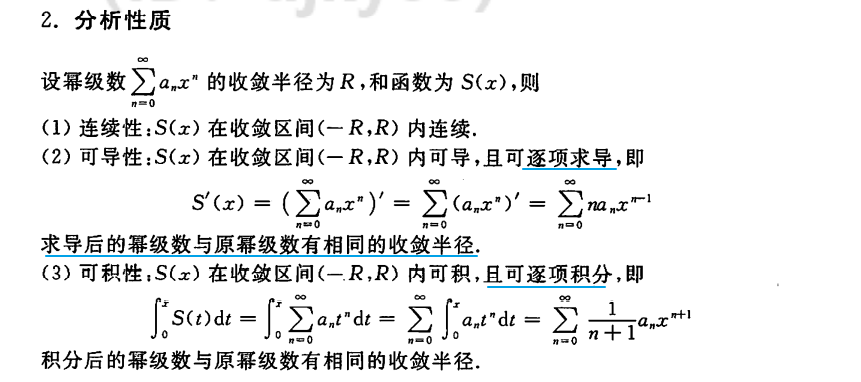
函数的幂级数展开
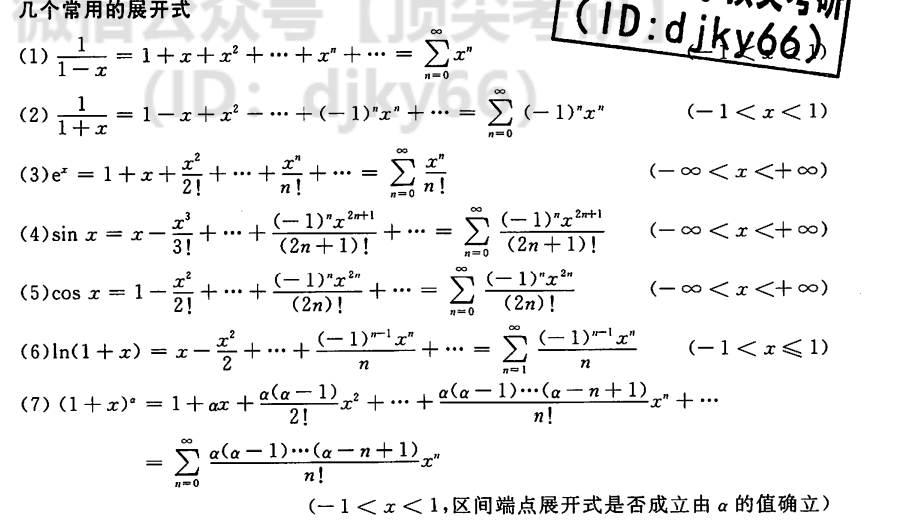
常考题型与例题
看笔记把!
栈与队列(五)-用栈实现表达式转换
中缀表达式转后缀表达式
- 从左到右进行扫描,遇到操作数写出来,遇到运算符就把他入栈。
- 入栈之前!将扫描到的运算符和栈顶运算符比较,如果扫描到的运算符小于或等于栈顶运算符优先级,就把栈顶运算符出栈并写入当前结果表达式中。
- 这个过程是一直循环的。即如果~小于等于,就出栈,写入结果表达式中,然后继续和新的栈顶运算符作比较,如果还是小于等于就继续出栈写入,这样一直进行下去,直到~大于,再将扫描到的运算符入栈。(栈空的时候也是直接入栈)
- 对于表达式里含有括号的情况,遇到左括号直接入栈。当栈顶元素是左括号的时候,所有扫描到的运算符都入栈,当扫描到右括号的时候,执行一系列出栈操作即:把当前栈中从栈顶到左括号鹅元素全部出栈,并将其写入结果表达式中,括号不写,出栈的括号直接扔掉。
- 最后当扫描完中缀表达式中的所有运算符的时候,若栈中还有剩余的运算符,则将其全部出栈,并写入结果表达式中。
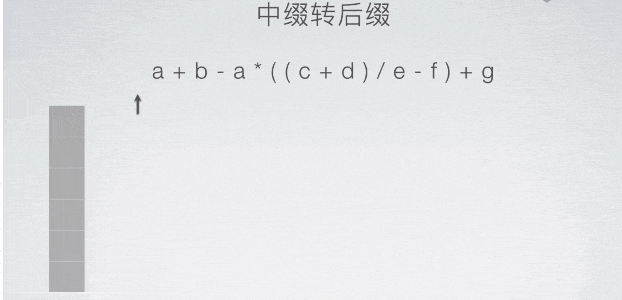
void infixToPostFix(char infix[], cahr s2[], int &top2)
{
char s1[maxsize]; int top = -1;
int i = 0;
while(infix[i] != '\0')
{
if('0' <= infix[i] && infix[i] <= '9')
{
s2[++top2] = infix[i];
++i;
}
else if( infix[i] == '(')
{
s1[++top] = '(';
++i;
}
else if( infix[i] == '+' || infix[i] == '-' || infix[i] == '*' || infix[i] == '/')
{
if(top1 == -1 || s1[top1] == '(' || getPriority(infix[i]) > getPriority(s1[top1]))
{
s1[++top1] = infix[i];
++i;
}
else
s2[++top2] = s1[top--];
}
else if( infix[i] = ')')
{
while (s1[top1] != '(')
s2[++top2] = s1[top--];
--top1;
++i;
}
}
while ( top1 != -1)
s2[++top2] = s1[top--];
}
中缀表达式转前缀表达式
不同上面的是,是从右往左扫描,遇到右括号入栈,遇到左括号全部出栈(这里所说的全部是指把栈顶到右括号之间的元素全部出栈。
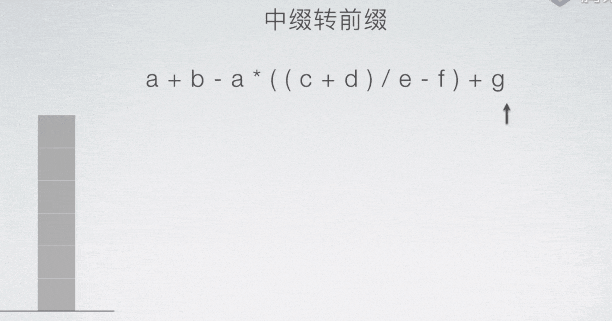
void infixToPostFix(char infix[], cahr s2[], int &top2)
{
char s1[maxsize]; int top = -1;
int i = 0;
while(infix[i] != '\0')
{
if('0' <= infix[i] && infix[i] [i] <= '9')
{
s2[++top2] = infix[i];
--i;
}
else if( infix[i] == ')')
{
s1[++top] = ')';
--i;
}
else if( infix[i] == '+' || infix[i] == '-' || infix[i] == '*' || infix[i] == '/')
{
if(top1 == -1 || s1[top1] == ')' || getPriority(infix[i]) >= getPriority(s1[top1]))
{
s1[++top1] = infix[i];
--i;
}
else
s2[++top2] = s1[top--];
}
else if( infix[i] = '(')
{
while (s1[top1] != ')')
s2[++top2] = s1[top--];
--top1;
--i;
}
}
while ( top1 != -1)
s2[++top2] = s1[top--];
}
重要比较
| 中缀转前缀 | 中缀转后缀 |
|---|---|
| 当前读取运算符优先级小于栈顶运算符优先级别出栈 | 当前读取运算符优先级小于或等于栈顶运算符优先级别出栈 |
后缀表达式转前缀表达式
每次扫描到一个运算符的时候,就把这个运算符所对应的两个子表达式移到运算符的右边即可。

田静语法C2-S2
非谓语动词作定语、状语
- 想确定非谓语动词表示的是主动被动或目的,要看去非谓语动词与逻辑主语(参照物)的关系。
- The networked computer is an amazing device...联网的电脑是一台神奇的设备。(电脑不能主动去联网。
- A team of researchers working together in the laboratory would submit the results of their reserch to a journal.实验室中一起工作的一组研究人员
- America's new plan to buy toxic assets will not work.这个计划的目的是去收购不良资产
- 想确定谓语动词作状语,表示的目的是主动被动或者目的,要看去非谓语动词与逻辑主语(即句子主语)的关系
同位语、插入语
- 同位语:解释说明前面的名词
- 插入语:后插入句子中的成分,表示补充说明。
- Tony,my teacher,is coming here.
- Tony,with his students,is coming here.
with his students是插入语,补充说明Tony和谁一起来。Tony与with his students说的不是同一个人。
my teacher是同位语,解释说明Tony是谁,Tony与my teacher说的是同一个人。
不是句子的核心,看句子的时候可以去掉先不看,但是也要先辨别的出来。
恋词U8
- executive n.执行;完成;死刑
- Chief Executive Officer 首席执行官
- modest adj.谦虚的;适度的;普通的
- prevalent adj.流行的;普遍的;广传的
- decent adj.体面的,相当不错的;得体的;正派的
- incentive n.刺激;激励;鼓励;动机
- pond n.池塘
- turn the corner 转危为安
- resort v.求助;凭借 n.度假胜地;诉诸
- departure n.离开,起程;出发
- bail v.允许保释;离开
- engender v.引起
- masculine adj.男性的;阳刚的
- metaphysical adj.形而上学的;抽象的